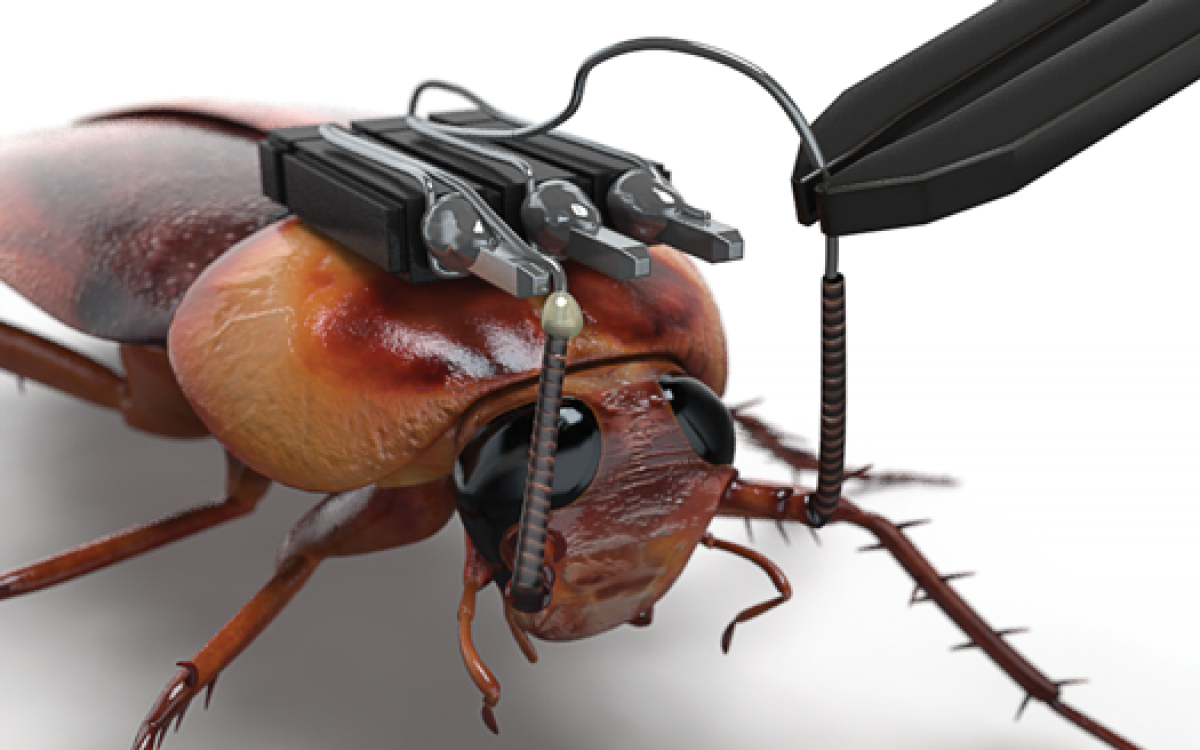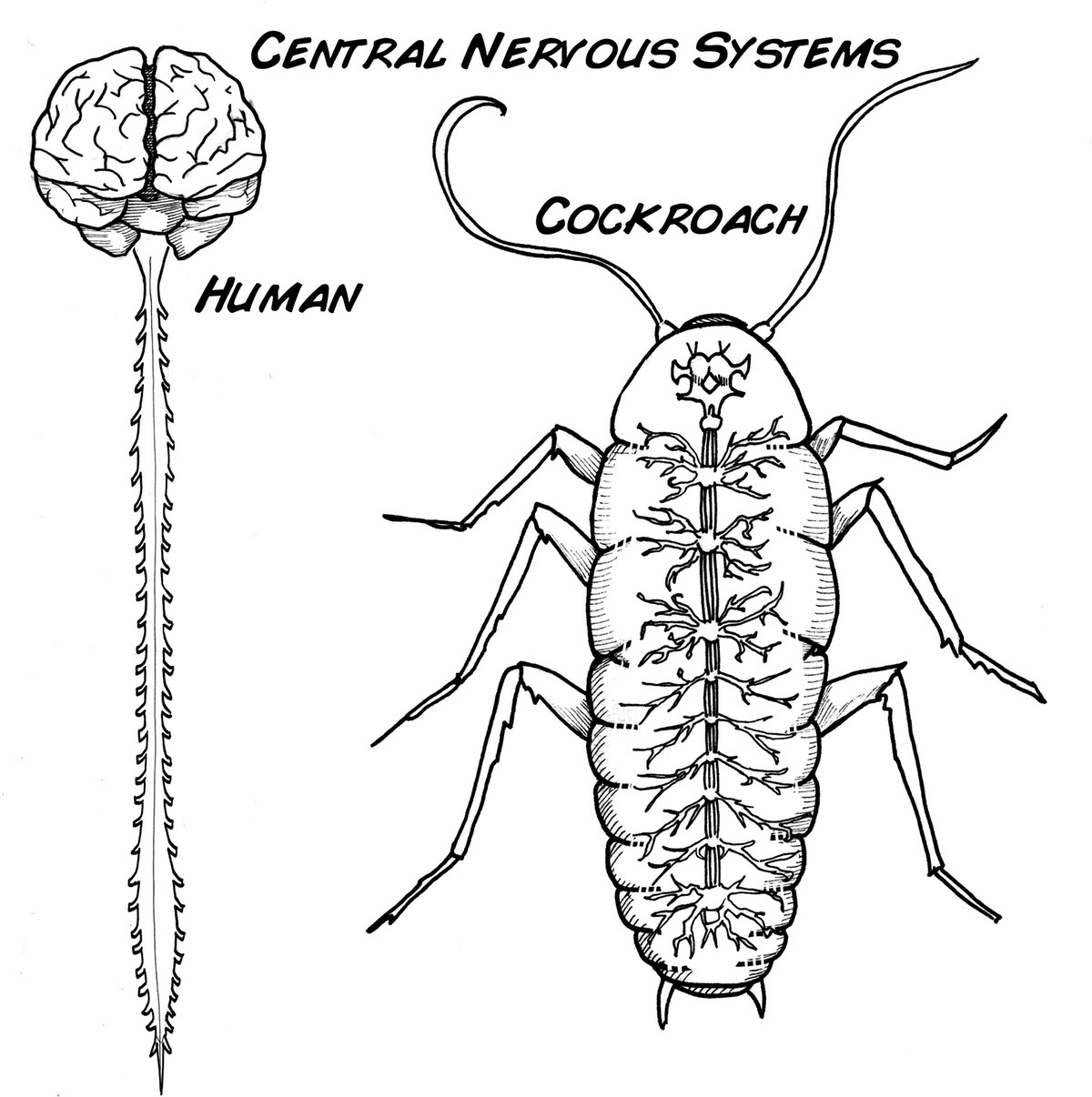Android cockroaches could soon be scurrying into nuclear power plants and collapsed mines to locate survivors, all thanks to a thumbnail-sized backpack.
Remote-controlled cockroaches: The future of cybernetic organism experiments.
The future of pests looks promising as researchers have recently found a way to control cockroaches via the use of an ‘electronic backpack.’ For the backpack to work the ‘roaches have to first be placed in icy water to subdue them, before sandpaper is used to remove the waxy coating on the shell of the insect’s head. An electrode connector and electrodes are then glued on to the insect’s body, with a needle used to pierce a hole in their thorax in order to insert a wire. Their antennae is then cut and electrodes are inserted, allowing for its movement to be controlled via an application. The electrodes stimulate the nerves in the insects’ antennae, enabling the researchers to steer the creatures around in a remote-controlled fashion. By carrying out these cybernetic organism experiments, we can gain a greater understanding of our own minds, through studying theirs. “These insects are better than any small-scale robots that exist today,” said Hong Liang, a materials scientist at Texas A&M University in College Station.
Information can effectively be collected and transmitted using this method, as cockroaches are able to travel where humans cannot, such as disaster zones. This is because they are one of the only few insects that can survive when exposed to extreme levels of nuclear radiation. Although they are deemed pests, cockroaches are extremely resilient creatures. Both American and Discoid cockroaches were used for the cybernetic experiment, with their shells big enough to endure the weight and size of the micro backpacks. The roaches were made to run onto a trackball, while researchers used microcontrollers to deliver electronic shots to the insects’ thoraxes, with the impact on the nerves causing them to turn left or right.
As expected, there are however many disadvantages that encompass these new developments. This form of testing can be considered to be animal cruelty, due to the harm and stress it may cause these insects, not mentioning the long term affects the electrodes could inflict on the ‘roaches individual movement. Another negative factor from carrying out these experiments can consist of potentially influencing amateurs to operate invasively on living organisms, reverting back to animal cruelty issues.
Cockroaches are not the only creature to wear a backpack to support scientific studies, as other animals previously known to have participated in similar experiments include sheep, peacocks and even dragonflies. This can help us to further understand their benefits to the environment.
Comparing Central Nervous Systems
There are of course, many differences between cockroaches and humans, yet in terms of the central nervous system, many comparisons can be made. The structure and function of our individual neurons for example is quite similar, allowing us to gain more of an insight and a better of understanding of how diseases of the brain such as Alzheimer’s work. Currently these experiments are focused in helping create a mobile web of smart sensors that use cockroaches to collect and transmit information, for instance finding survivors in a building that has been destroyed by an earthquake.
However, it can also help us to understand how cybernetics would work on a human being, allowing technologies such as cybernetic eyes and bionic arms to be developed further. The world’s first ‘Bionic Man’ Jesse Sullivan, is a prime example of human bionics and its technological advancements of the central nervous system, as he had a fully robotic limb installed after losing his arm in an accident. The bionic arm works by using nerve-muscle grafts to gain added control signals for an artificial arm. The location of the nerves are moved into the chest muscles, so when Jesse wants to move his hand for example, a portion of his chest muscle contracts and electrodes that detect this tell the computerised arm to move the hand. Jesse only has to think ‘close hand’ and his artificial hand will close.
What are your thoughts on cybernetic organism experiments and their developments? Do you think these experiments contribute to animal cruelty or are these developments crucial to gaining a better understanding of the human brain?
For more information






